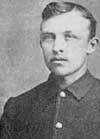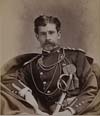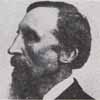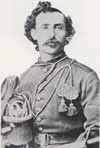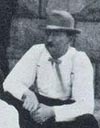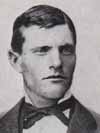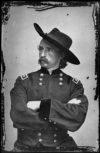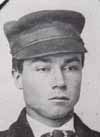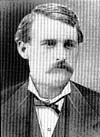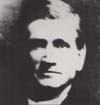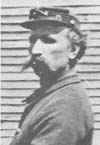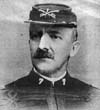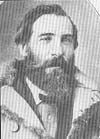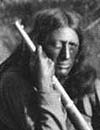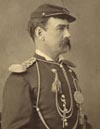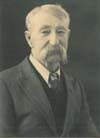Alexander Brown Bishop was born on November 22, 1853, in Brooklyn, New York. He was a Corporal in Company H who was wounded during the hilltop fight at the Battle of the Little Bighorn.
Edward Garlick married Ann Elizabeth Hahn Dose, the widow of Henry C. Dose, on November 22, 1876. Garlick was the First Sergeant of Company G, but he was not at the battle because he was on furlough back in his native England. Dose was the Trumpeter for Company G who was killed with Custer’s Column.
George Gaffney died in Washington, D.C., on November 22, 1916, and was buried on November 27 in the Soldiers’ Home National Cemetery there. He was a Sergeant in Company I who was not present at the battle due to detached service.
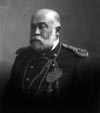
Charles Braden (left) was born on November 23, 1847, in Detroit. He was an 1859 graduate of the United States Military Academy at West Point where he received his commission. He was a First Lieutenant in Company L who was not present at the battle due to illness.
William C. Slaper (right) was born on November 23, 1854, in Cincinnati. He was a Private in Company M who participated in the valley and hilltop fights.
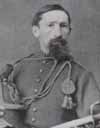
Martin Personeus married Mary Pauline Crisfield, the widow of William B. Crisfield, on November 23, 1876. Personeus was a Private in Company L who was not present at the battle due to detached service at Fort Abraham Lincoln. He was the company cook and was left behind to tend the company garden. Crisfield (left) was also a Private in L Company who was killed with Custer’s Column. According to her grandsons, Mary Crisfield was a laundress for the 7th Cavalry at the time of the battle.

George Blunt (left) died on November 23, 1905, at the Joyce Hotel in Baltimore, Maryland, and was buried in the Loudon Park Cemetery in that city. His death was ruled a suicide by gas asphyxiation. He was a Private in Company K who participated in the hilltop fight.
Augustus Louis DeVoto died on November 23, 1923, in Tacoma, Washington, and was buried in the Calvary Cemetery there. He was a Private in Company B who was with the pack train and in the hilltop fight.
Charles Henry Campbell died on November 25, 1920, in Bismarck, North Dakota, and was buried in St. Mary’s Cemetery there. He was a Private with Company B who was with the pack train and in the hilltop fight during the battle.
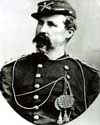
Joseph Greene Tilford (left) was born in Georgetown, Kentucky, on November 26, 1828. He was an 1851 graduate of the United States Military Academy at West Point who was a Major at the time of the battle. He was absent with leave in Europe for a year from October 25, 1875, so he was not present at the battle.
October 26: Happy Thanksgiving to readers in the USA!
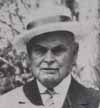
William Ephraim Morris (right) died in New York City on November 26, 1933, and was buried in the Kensico Cemetery in Valhalla, New York. He was a Private in Company M who fought in the valley and hilltop fights and was wounded.
Hiram Wallace Sager was born on November 27, 1850, in Westport, New York. He was a Private in Company B who was with the pack train and in the hilltop fight.
The Battle on the Washita was on November 27, 1868.
Morris Hedding Thompson died on November 27, 1911, in Cloverdale, California, and was buried in the Cloverdale Cemetery there. He was a Private in Company E who was not present at the battle. Like Martin Personeus, he was a cook who was on detached service at Fort Abraham Lincoln, charged with tending the company garden.
George B. Herendeen was born on November 28, 1846, in Parkman Township, Geauga County, Ohio. He was a civilian scout who participated in the battle in the timber and on the hilltop. According to historian Gregory Michno, Herendeen was largely responsible for assertions of Marcus Reno‘s cowardice.
John R. Steinker committed suicide by poisoning on November 28, 1876, at Fort Abraham Lincoln, Dakota Territory, and was originally buried in the cemetery there. He was later reinterred at Custer National Cemetery on the Crow Agency, Montana. He was a Farrier with Company K who participated in the hilltop fight.
